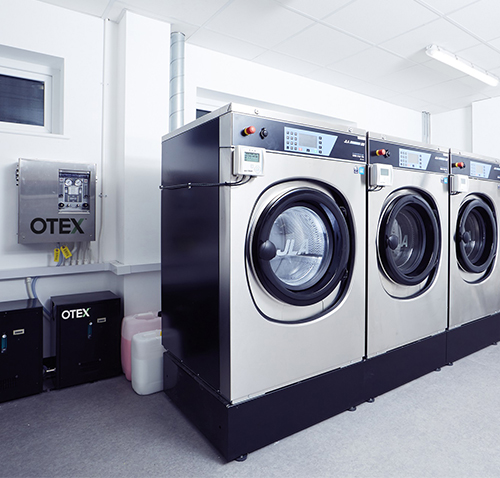United Kingdom
Treating coronavirus-infected laundry with a professional ozone washing system could have a significant impact on the future of infection control, according to new research. The in-depth study at the University of De Montfort in Leicester found that the OTEX washing system, which uses ozone to kill bacteria even at low temperatures, completely removed all traces of the coronavirus (OC43), a model virus for SARS-CoV-2.
The system developed by JLA was tested by a research team headed by Dr. Katie Laird, microbiology reader and head of the infectious diseases research group, and veteran virologist Dr. Maitreyi Shivkumar, lecturer in molecular biology, was supervised. The investigation showed that cleaning with the OTEX technology completely removed the coronavirus even with large washing volumes. Additional tests also showed that the virus was not transmitted to other textiles when washed.
The study is considered to be one of the first of its kind and shows that coronavirus-infected laundry can also be cleaned at low temperatures, so that heat-sensitive items such as personal clothing, hospital mattress covers, rescue clothing and microfiber items can be cleaned effectively.
Dr. Laird and her team are now completing the next phase of their research, examining the rate at which the virus is inactivated during the cleaning process in order to get more data on the length of time and the amounts of ozone it takes to clear the virus.
Dr. Laird commented, “A key element in combating the spread of Covid-19 is understanding how effective infection control can be implemented in real-world environments. There are a variety of situations where fabrics that may carry the virus need cleaning, such as: B. Nursing homes, hospitals and hotels.
“So far we have little data on how the virus reacted to different types of cleaning. These first results show that cleaning with ozone, as in the OTEX system, completely removes the model coronavirus.
“This also applies to handling larger loads of laundry, as is likely to be the case with a real laundry. This result can reassure you that such cleaning is effective. "
The impact of these results is of tremendous importance in the fight against COVID-19 and the protection of both service users and staff. The financial and environmental benefits are equally impressive. Research shows that over the average life of a 30kg thermal disinfection cycle over seven years, using OTEX can cut operating costs by over £ 130,000 while reducing the company's overall carbon footprint by over 400 tonnes.
Helen Ashton, CEO of JLA, said: “I am very pleased with the results of these tests as we here at JLA are doing our part to eradicate this terrible virus. We have been developing and refining the OTEX laundry system for over 15 years. The advantages for our customers are obvious: the complete eradication of diseases, including coronavirus, even at low temperatures, and a significant reduction in operating costs while at the same time providing significant environmental benefits.
“The system was designed to be easy to use and to check the disinfection process in real time for every wash. This offers a unique audit trail for full compliance with legal standards. "
• The OTEX system was recognized back in 2009 by the NHS Rapid Review Panel, which was set up to accelerate new technologies to treat hospital-acquired infections and achieve the highest grade (Level 1) for infection control products. More recently, compliance with the current HTM01-04 guidelines has been assessed by Public Health England for the decontamination of healthcare linen. The OTEX ozone system is also fully supported in accordance with the EU regulation on biocidal products.
Further information on OTEX by JLA can be found at: https://jla.com/otex




